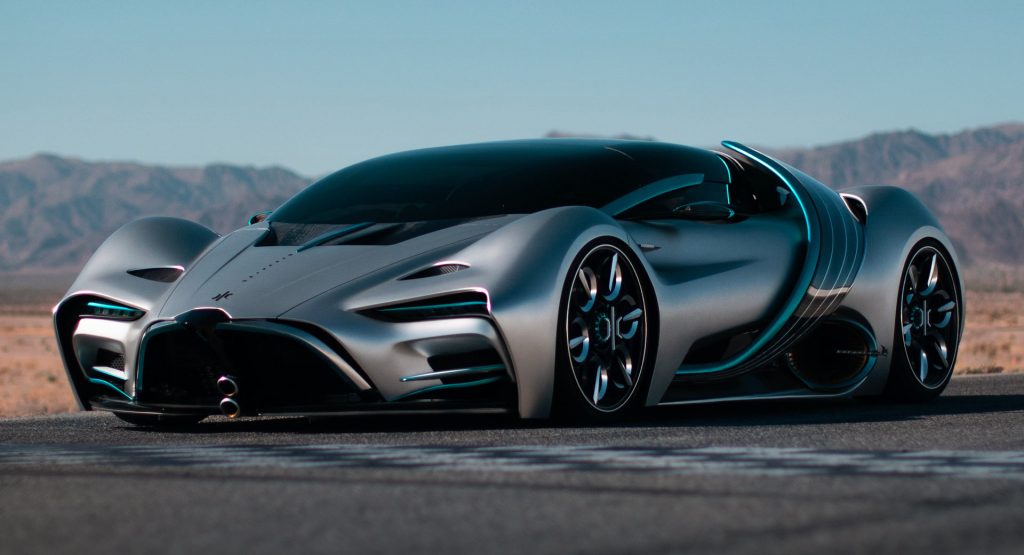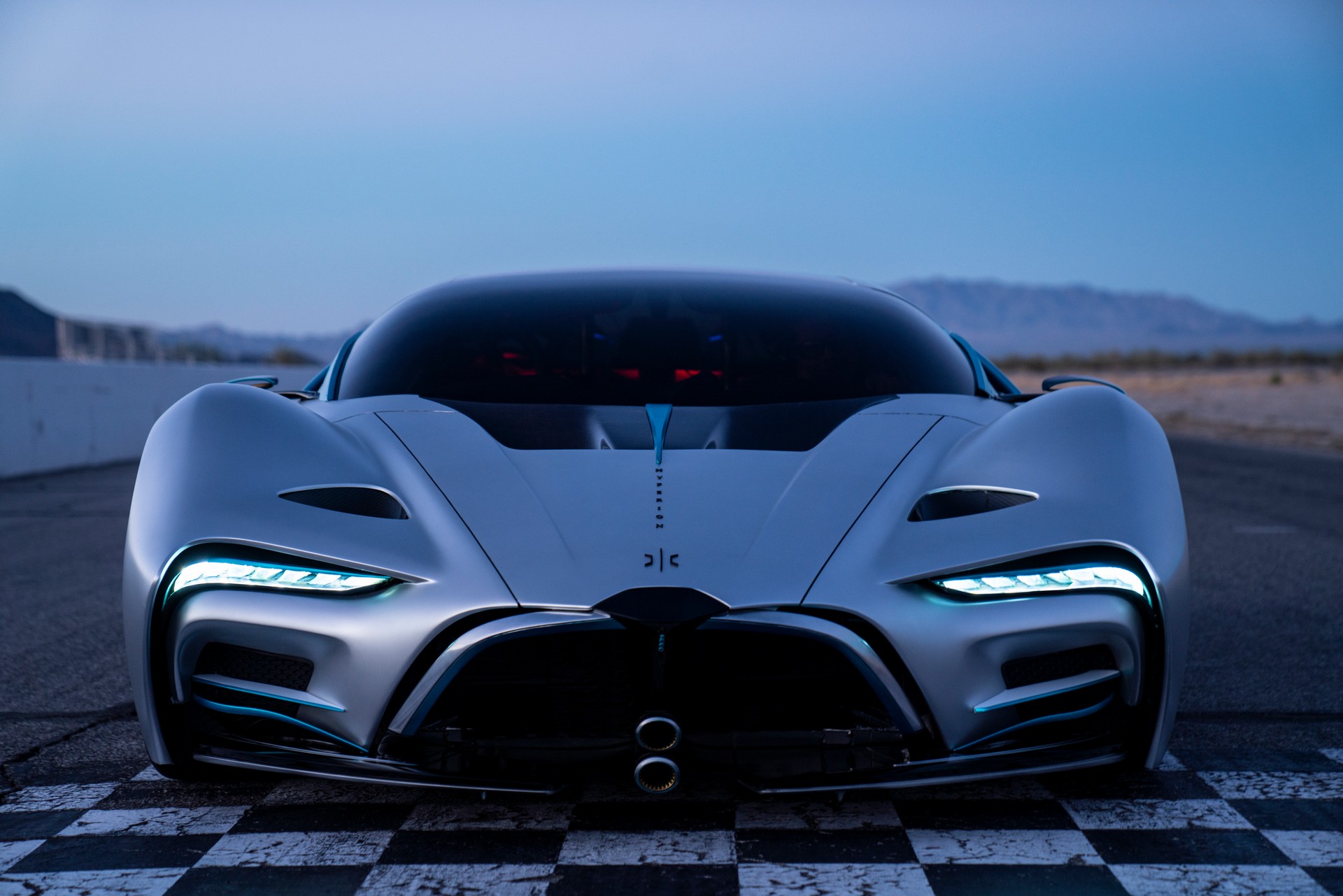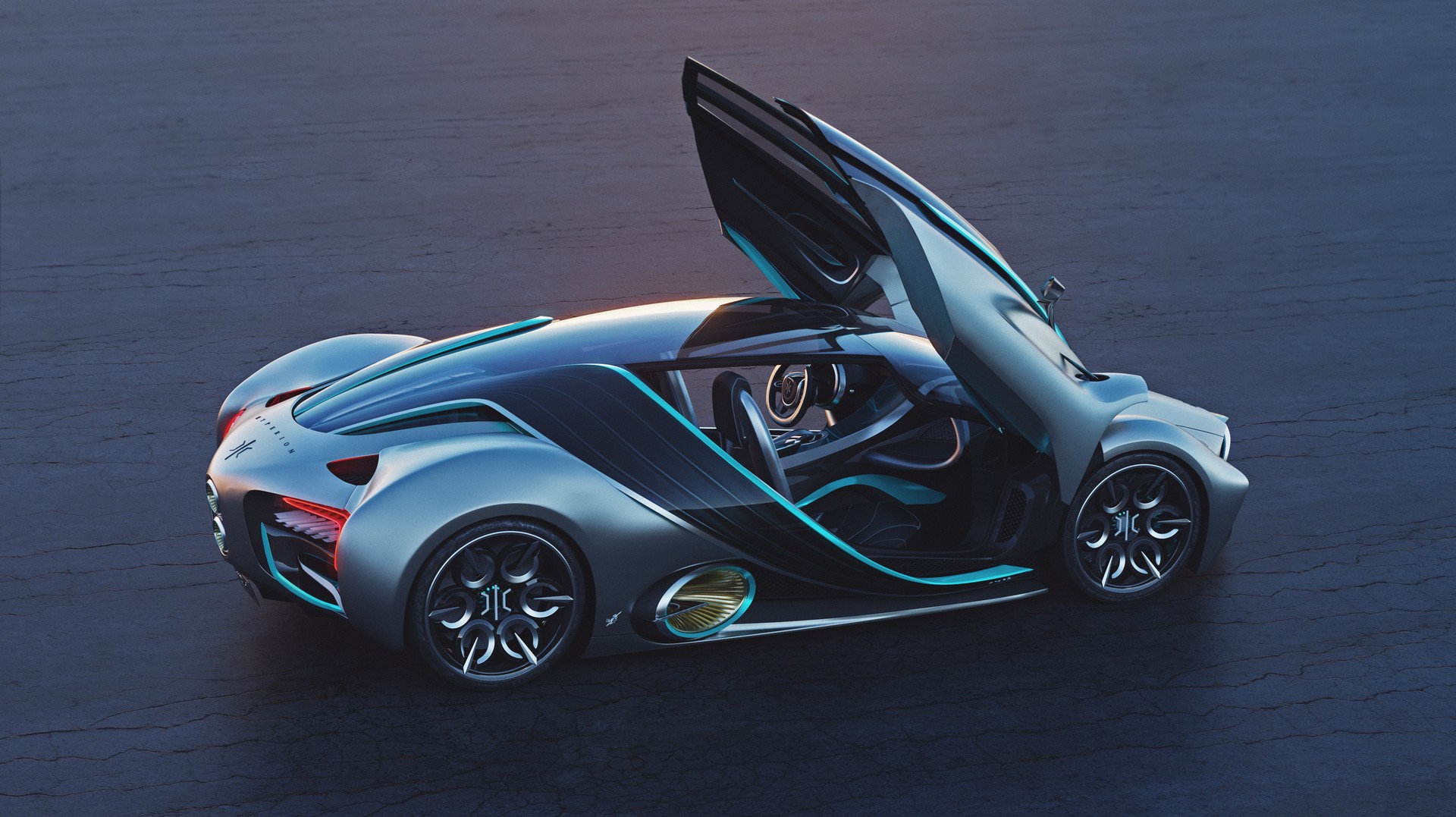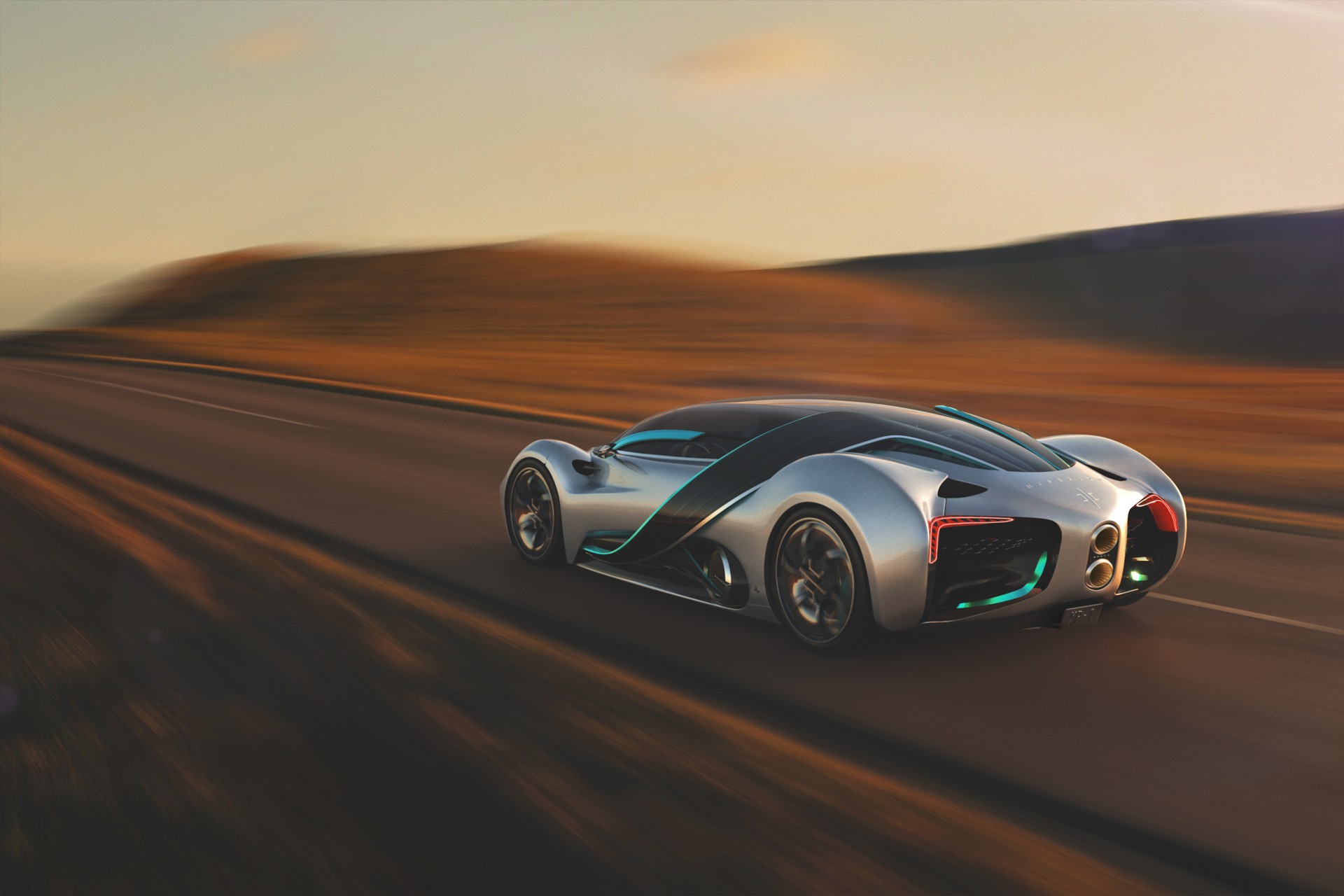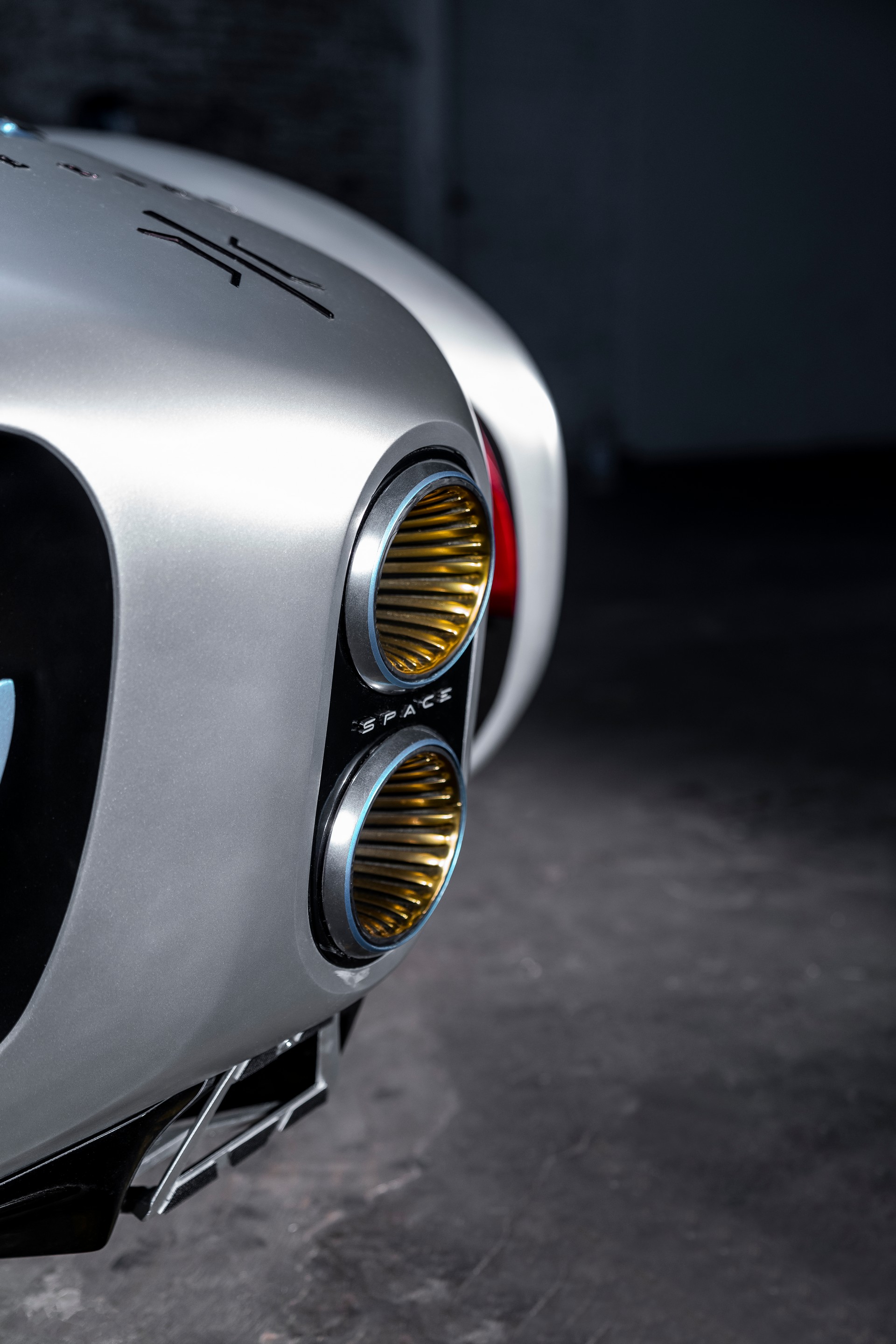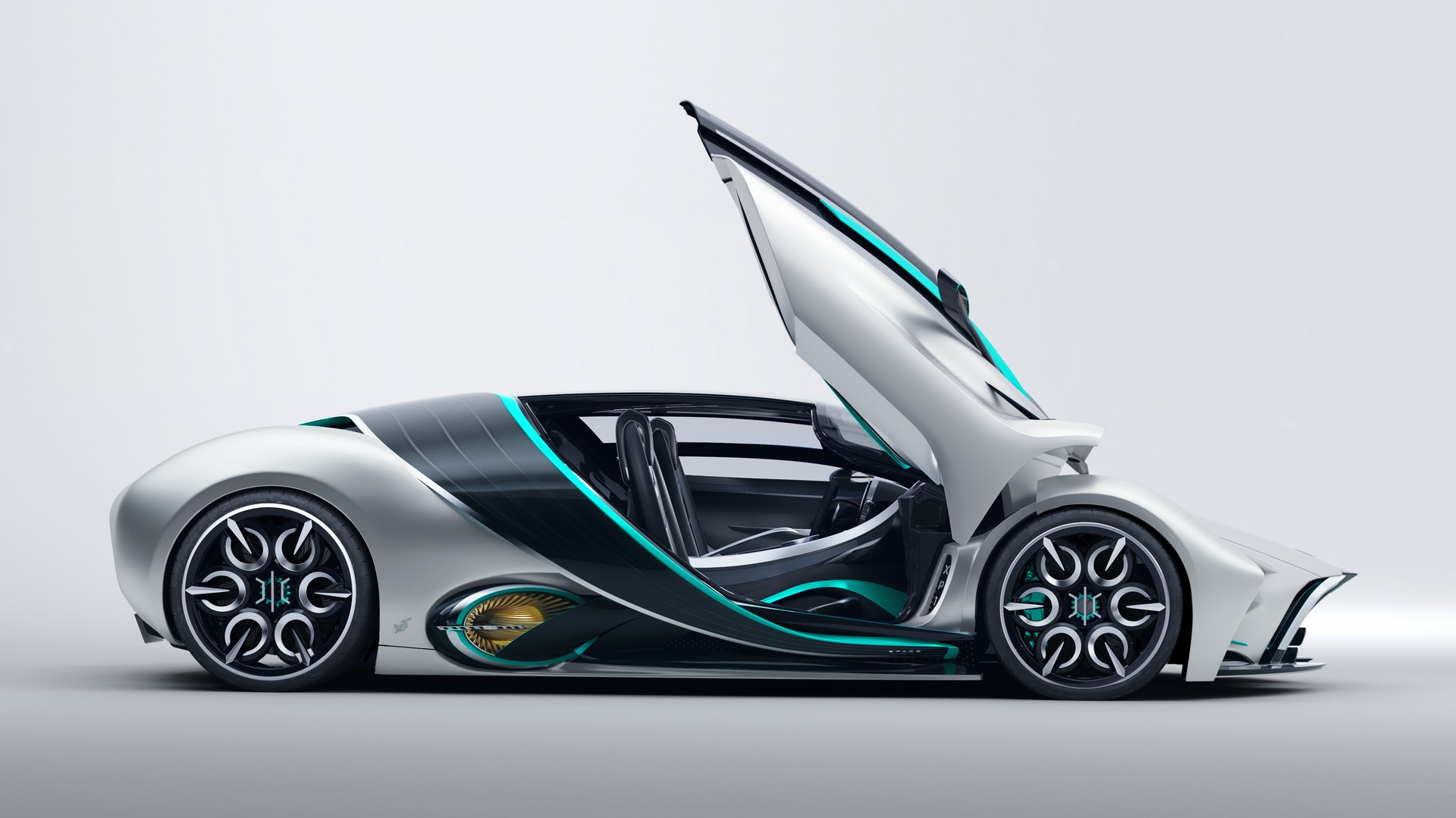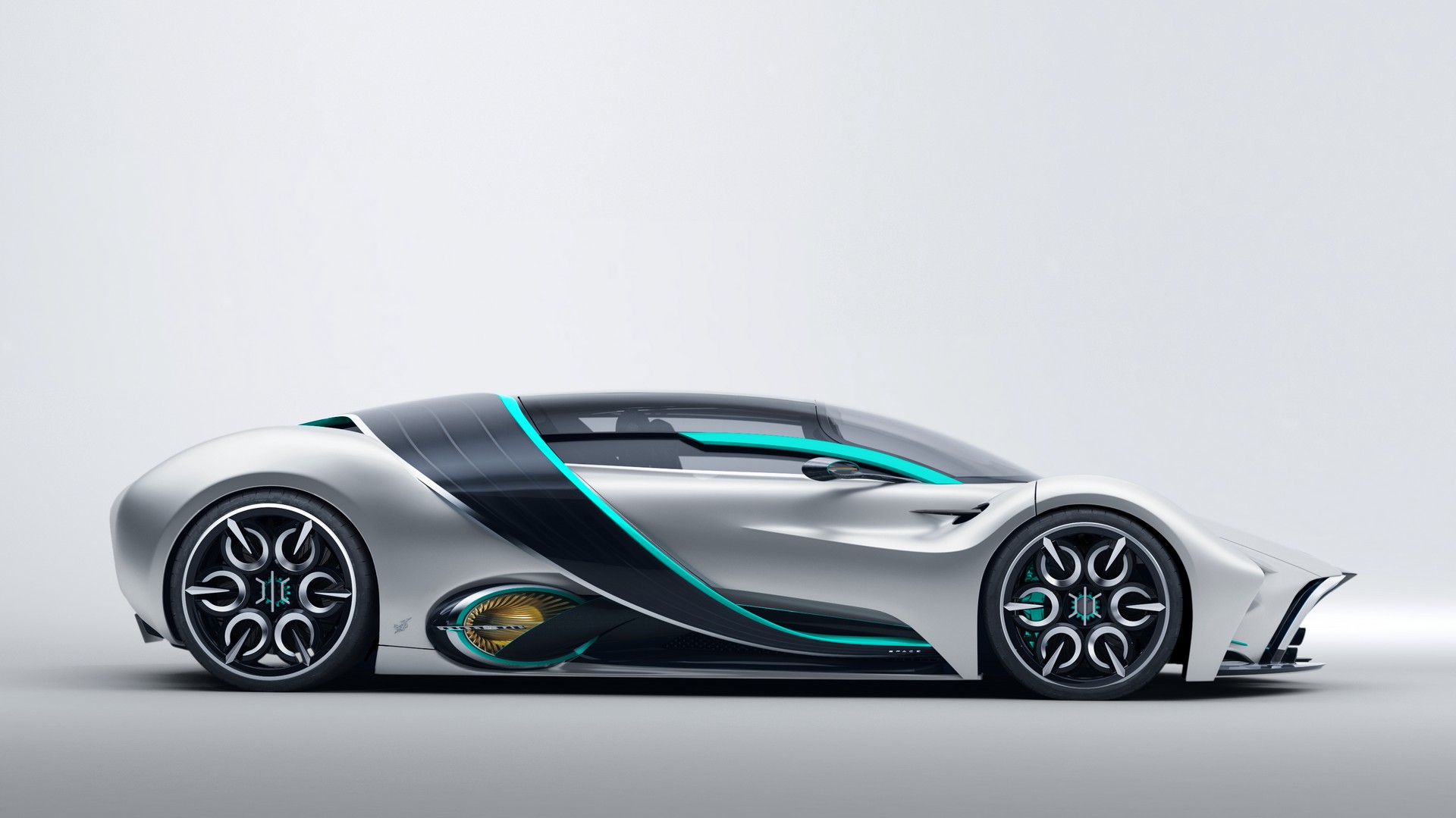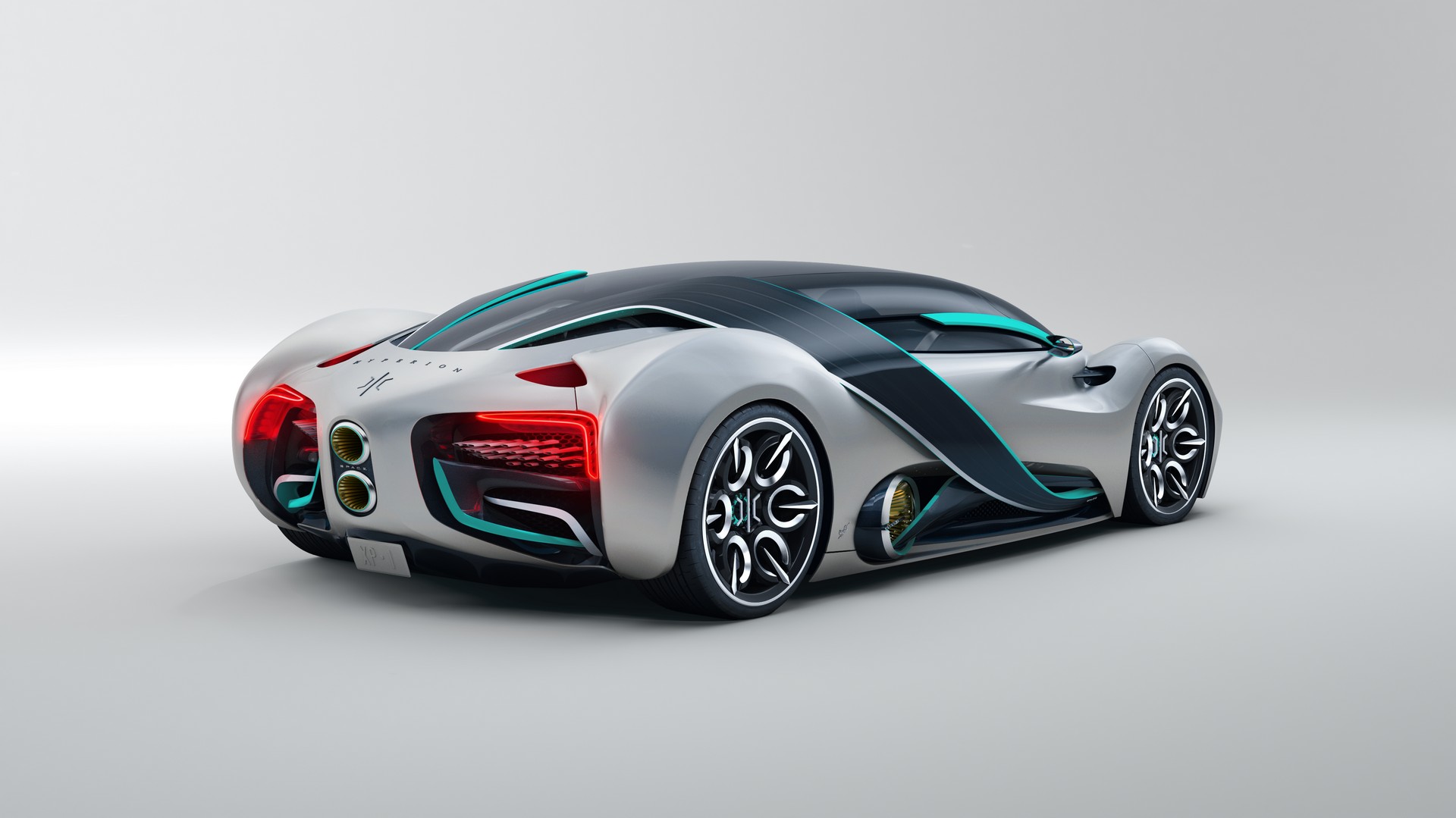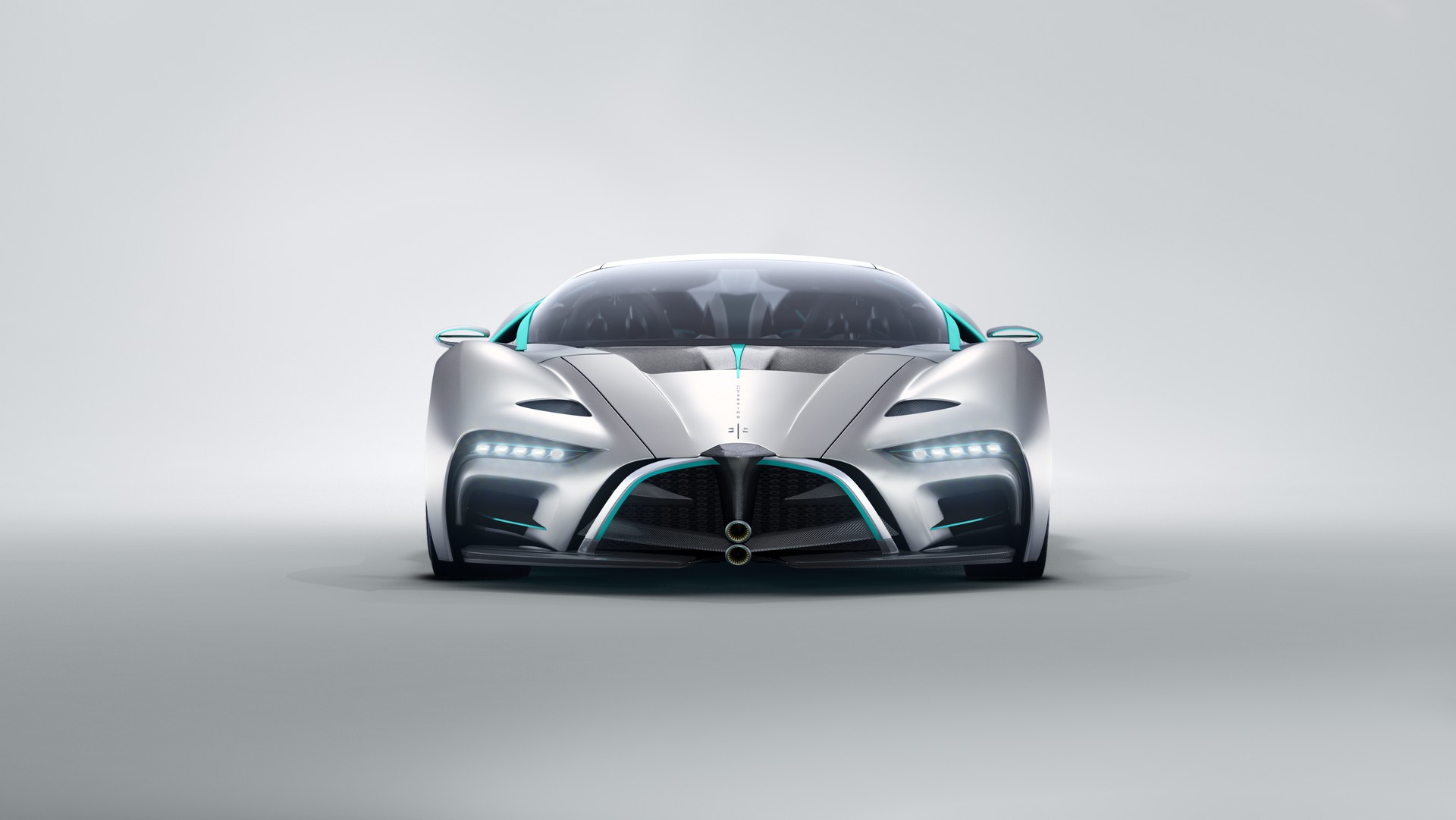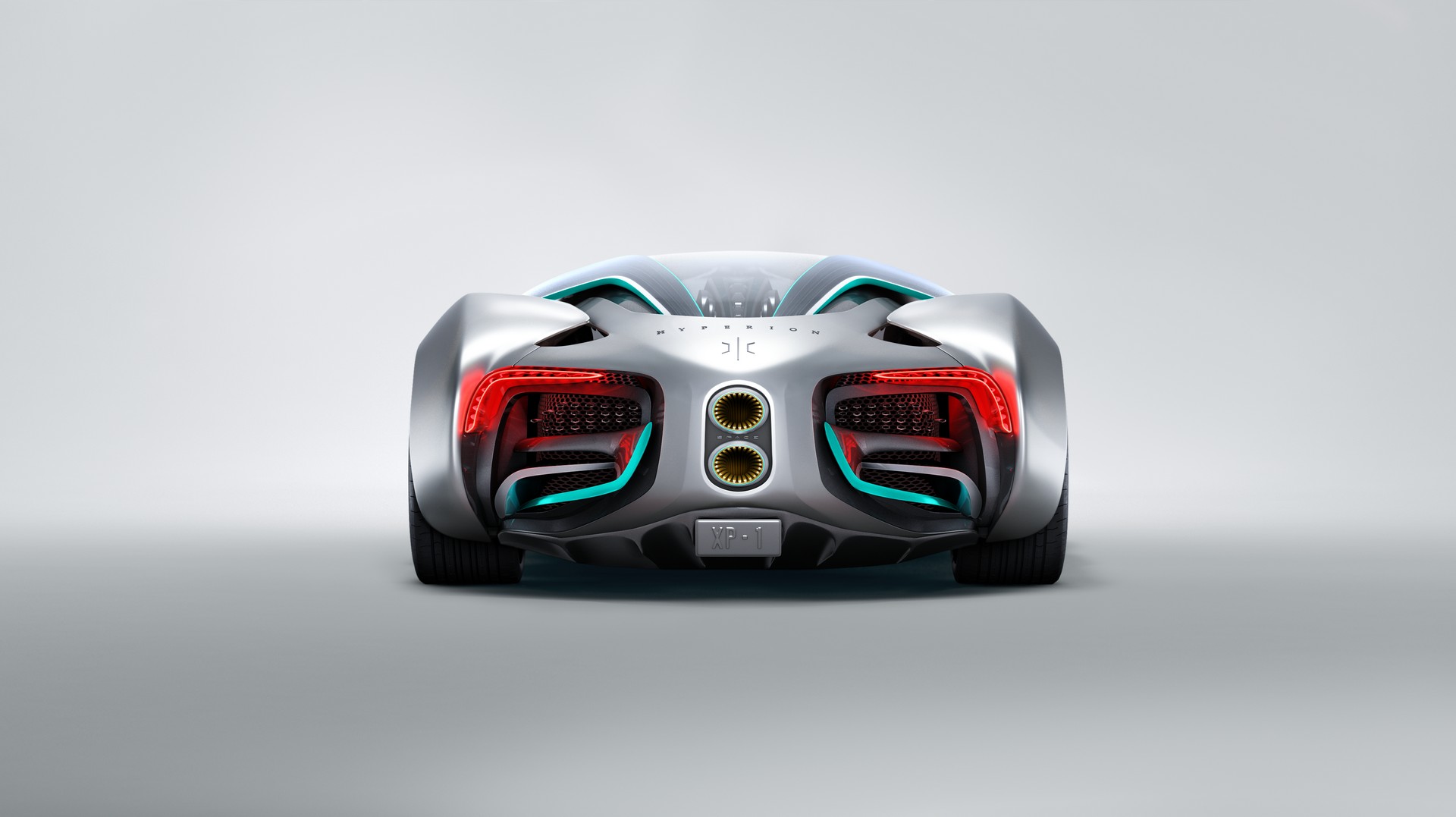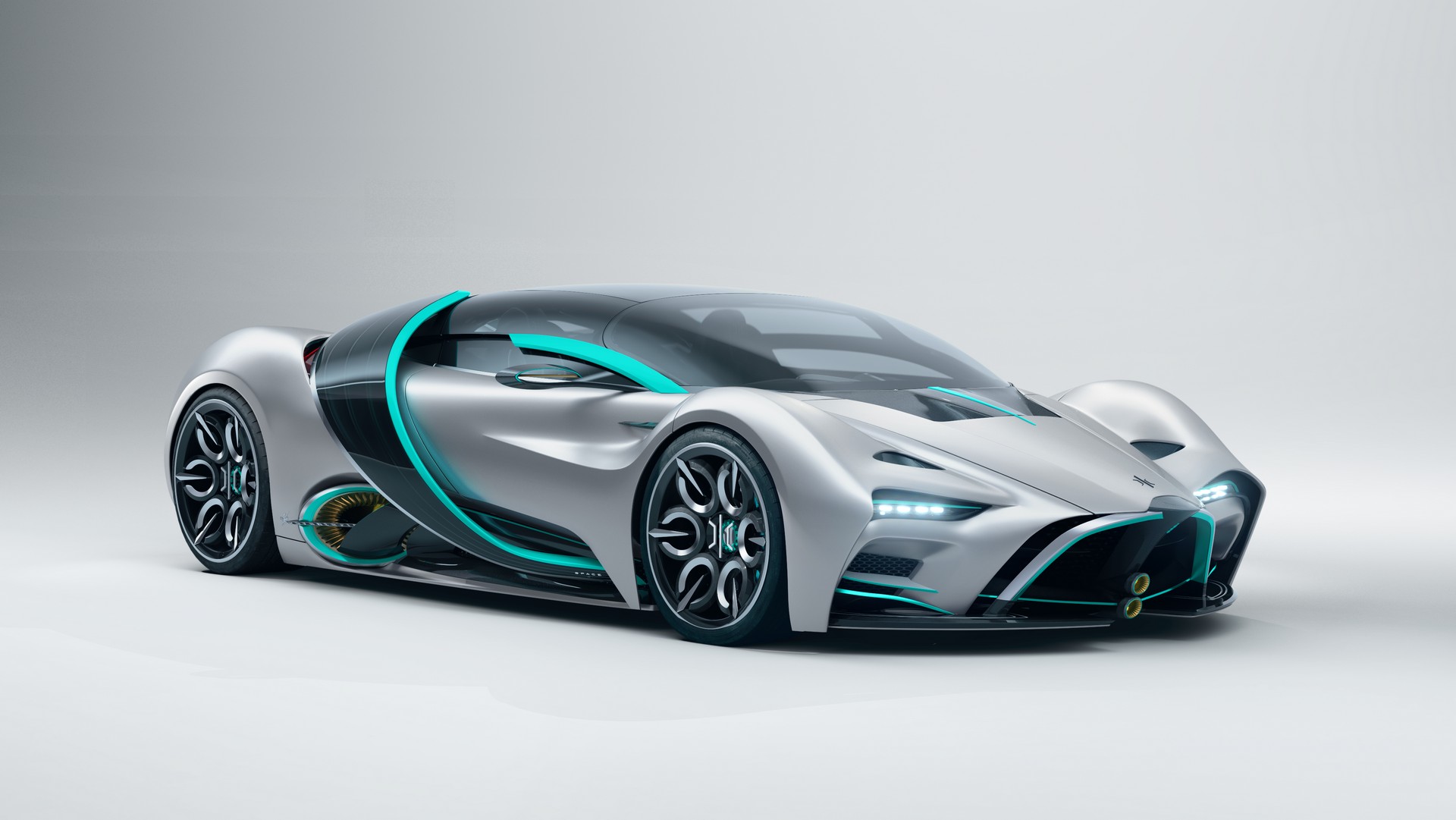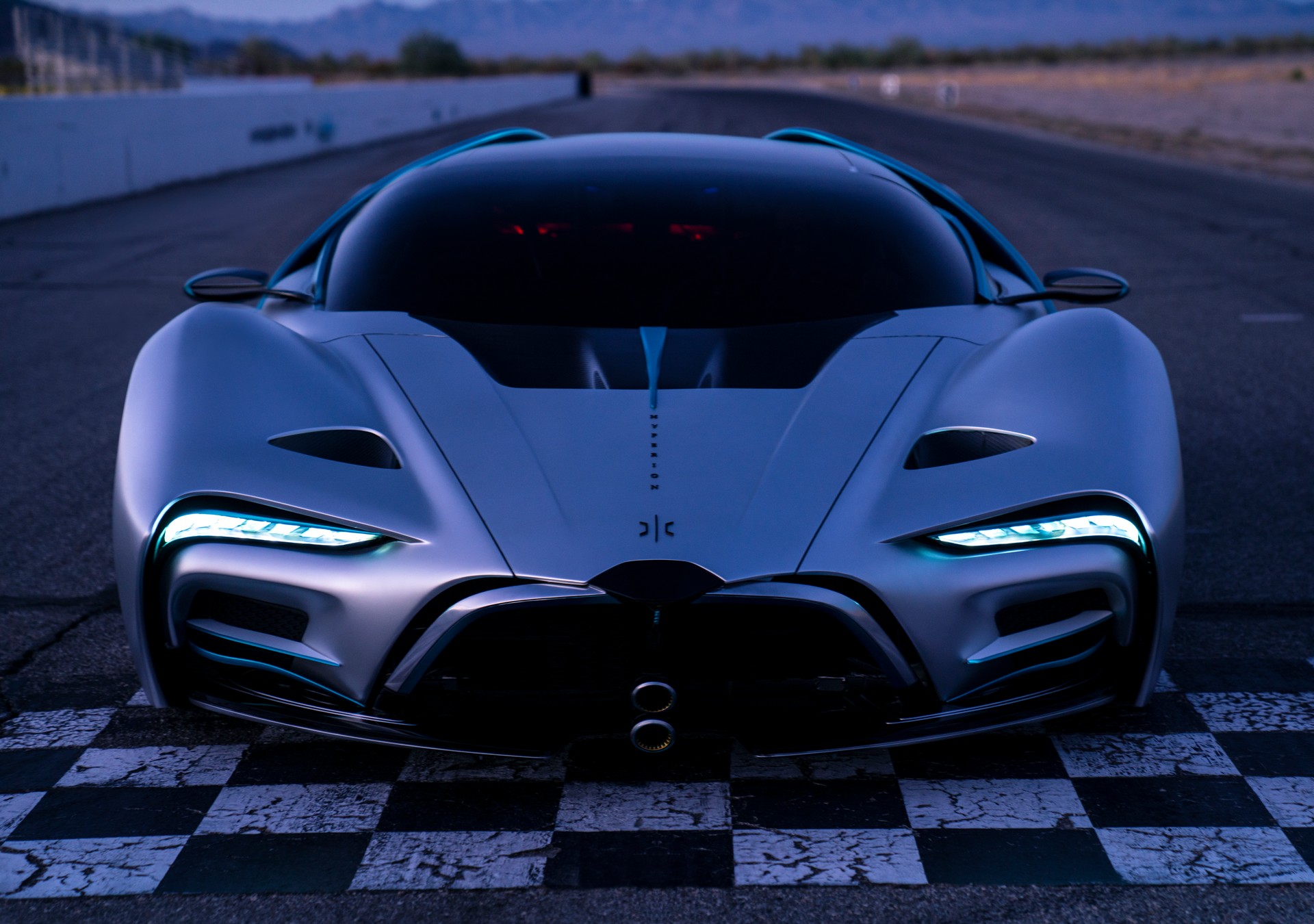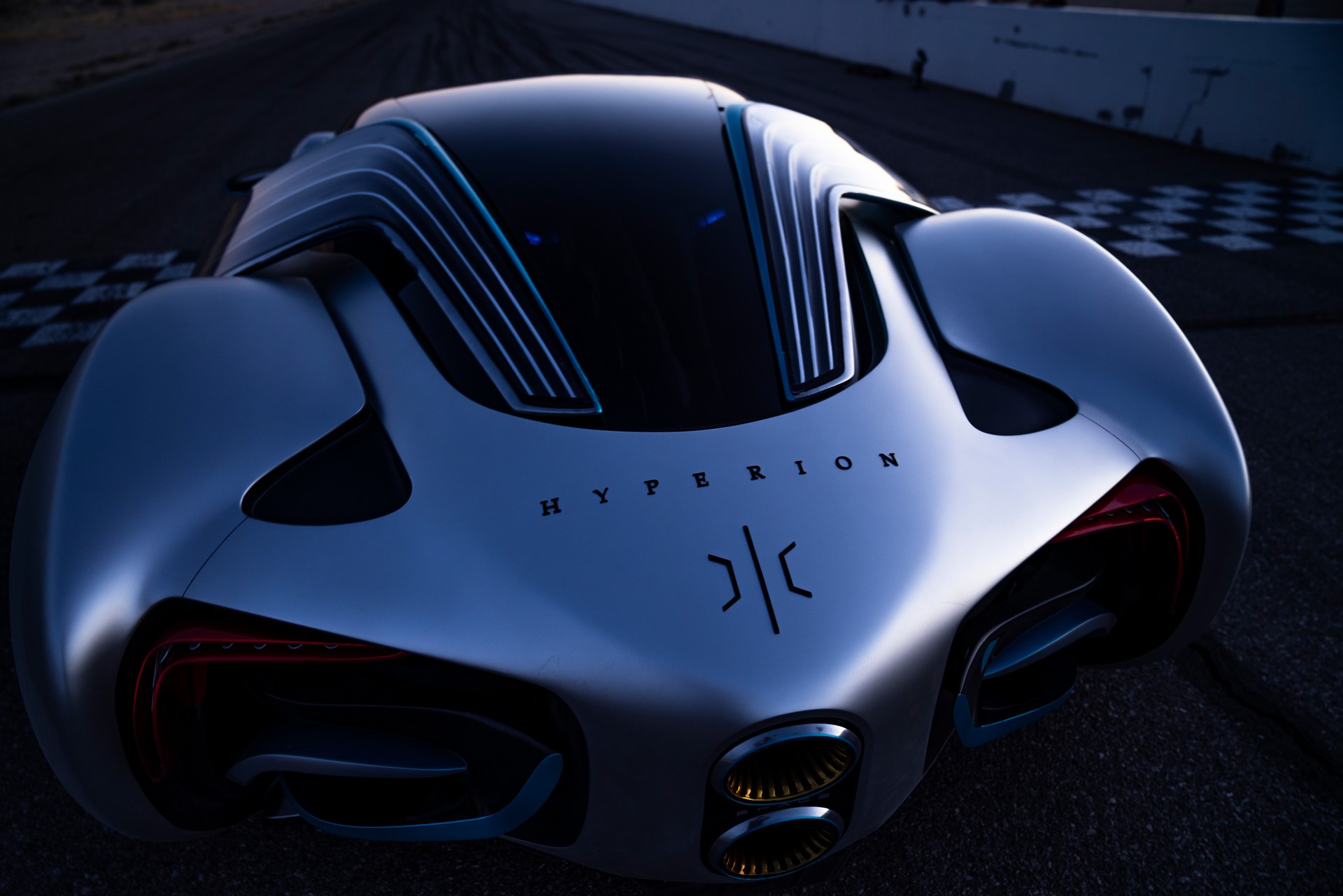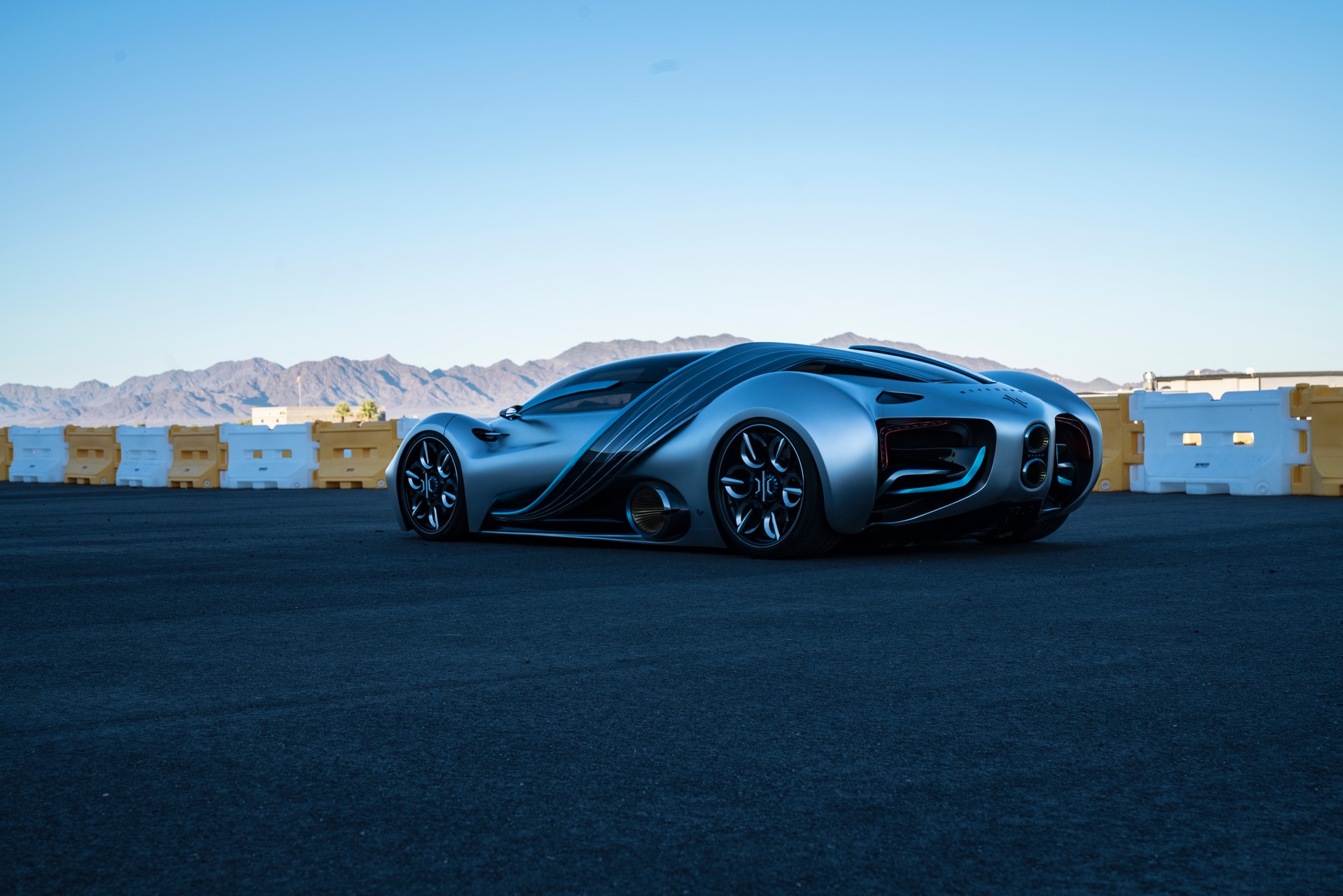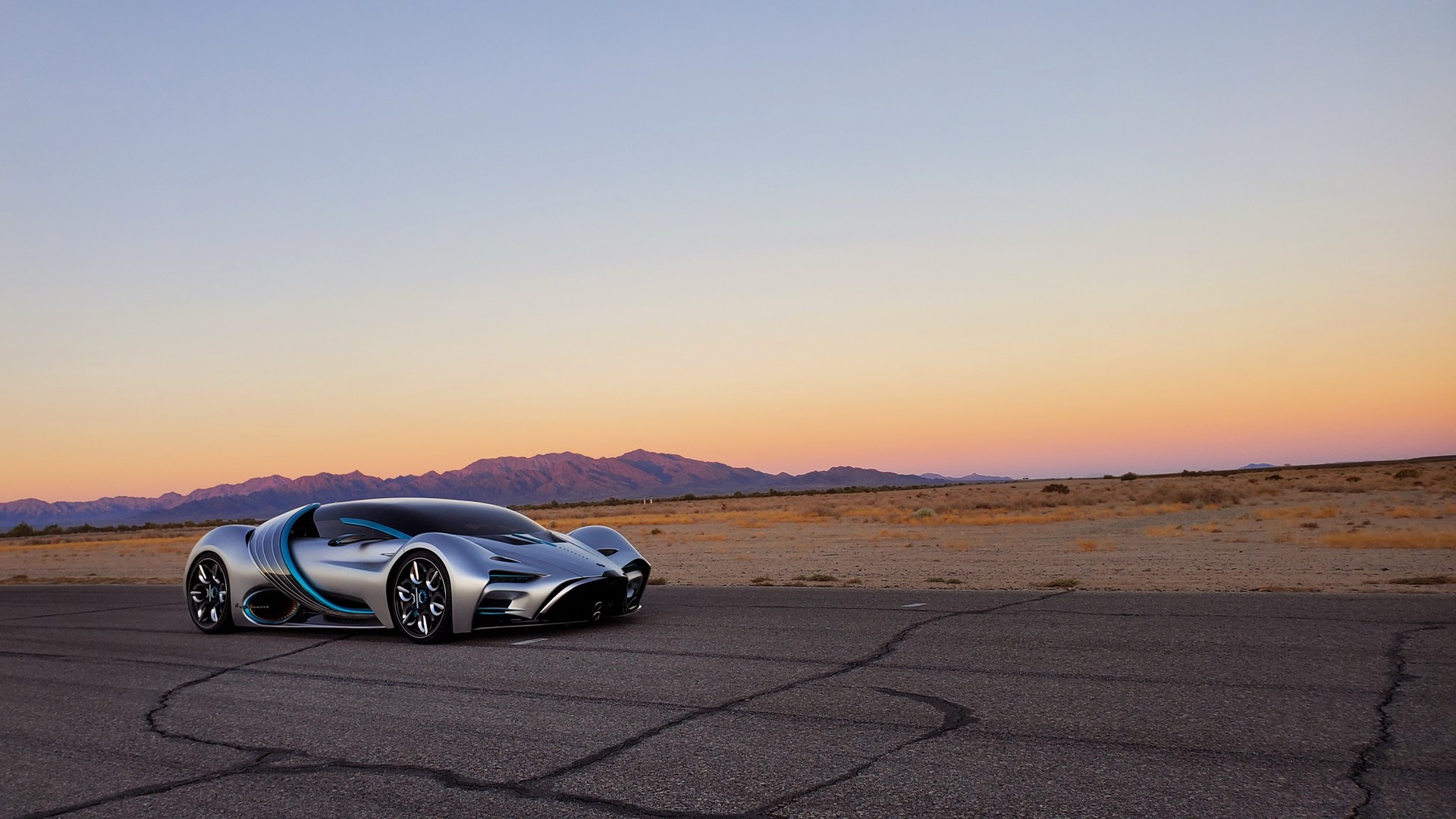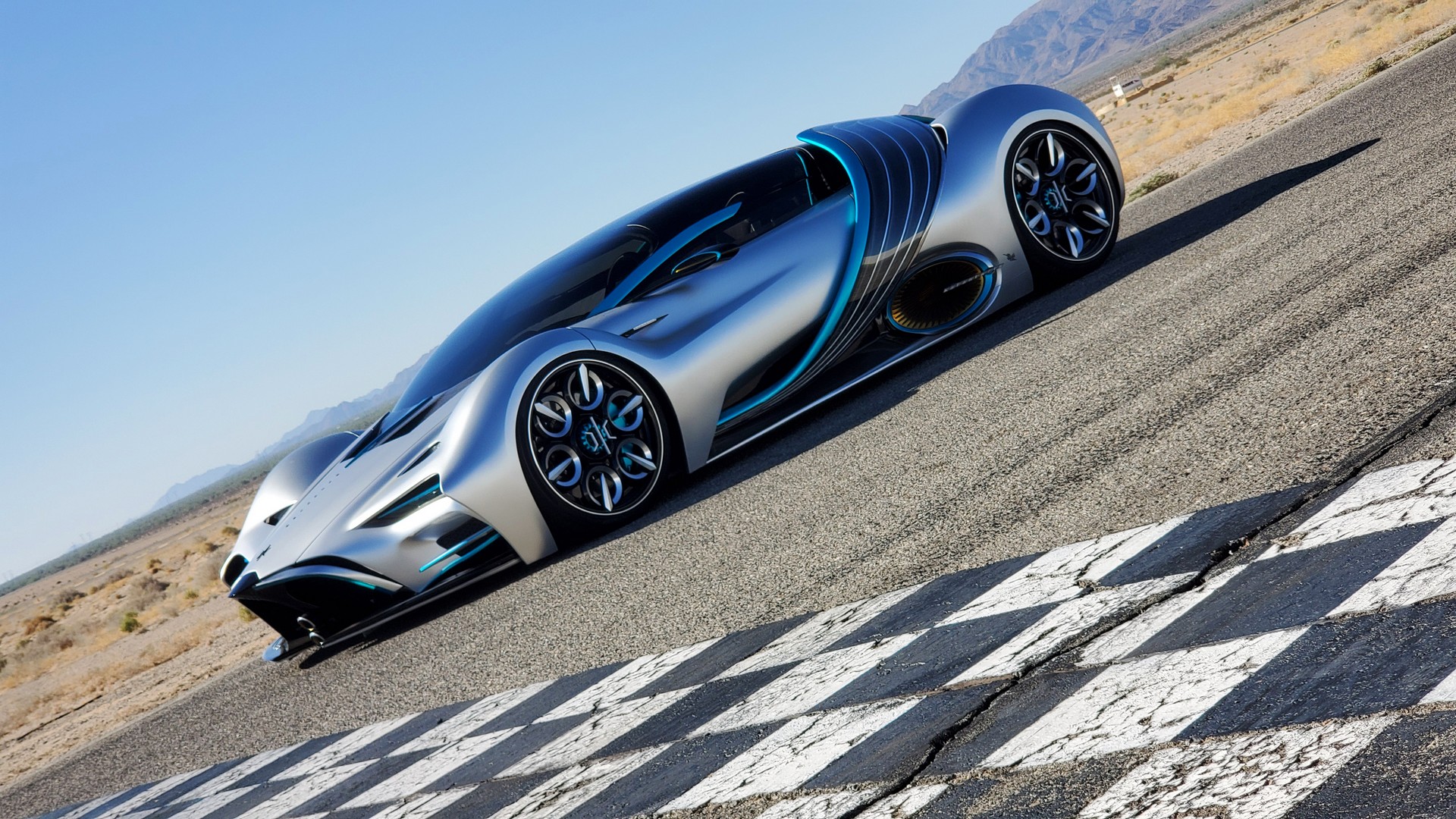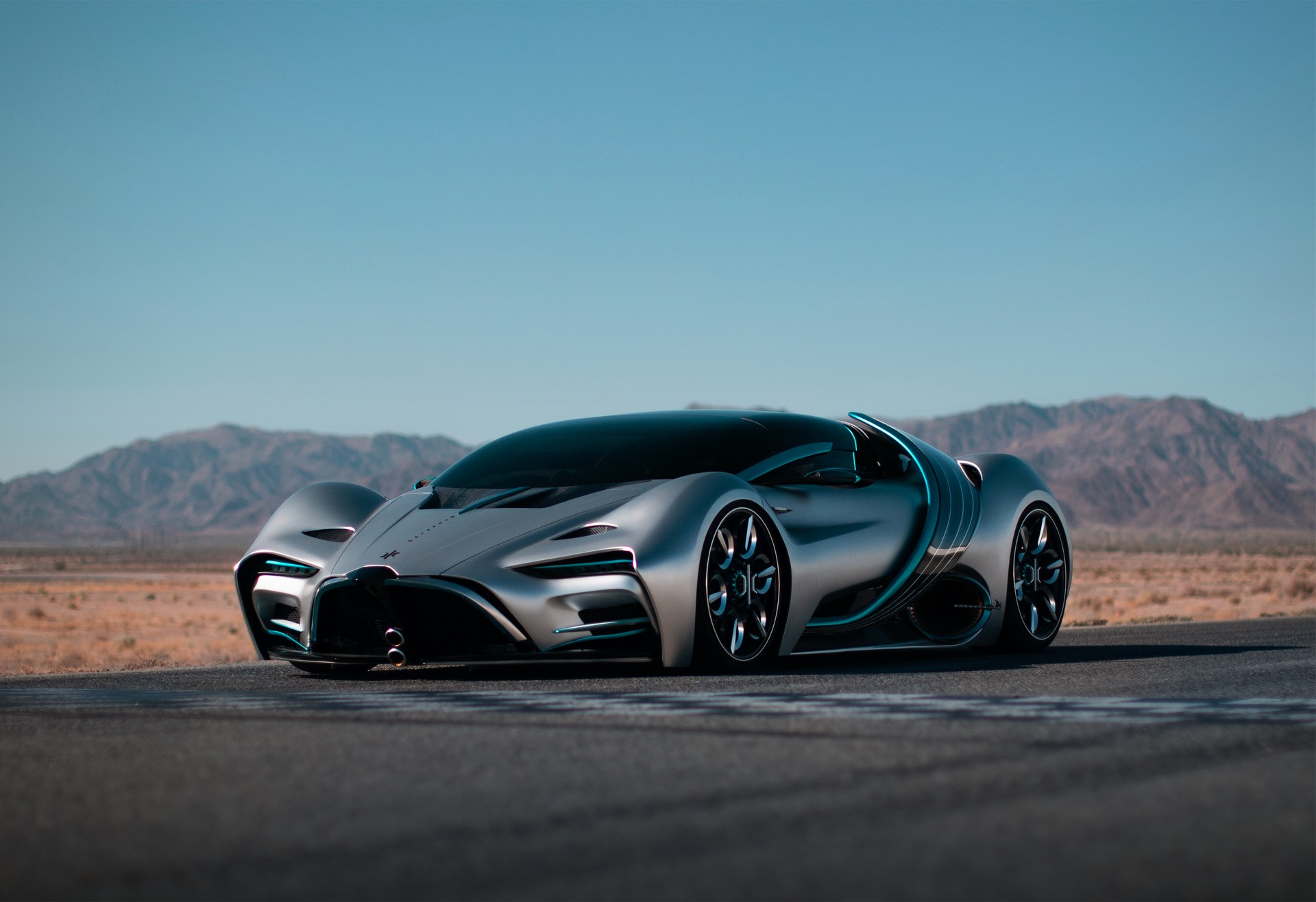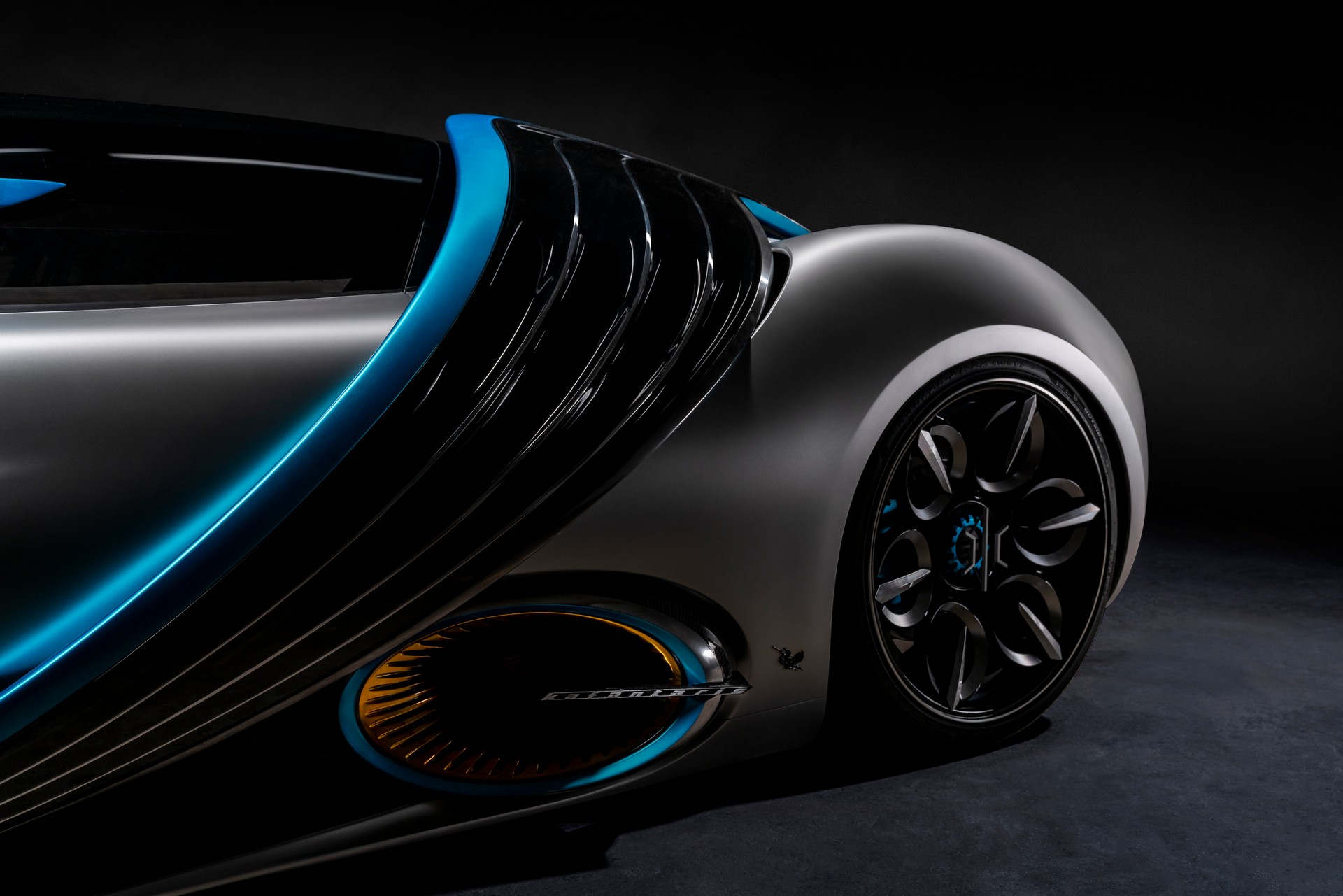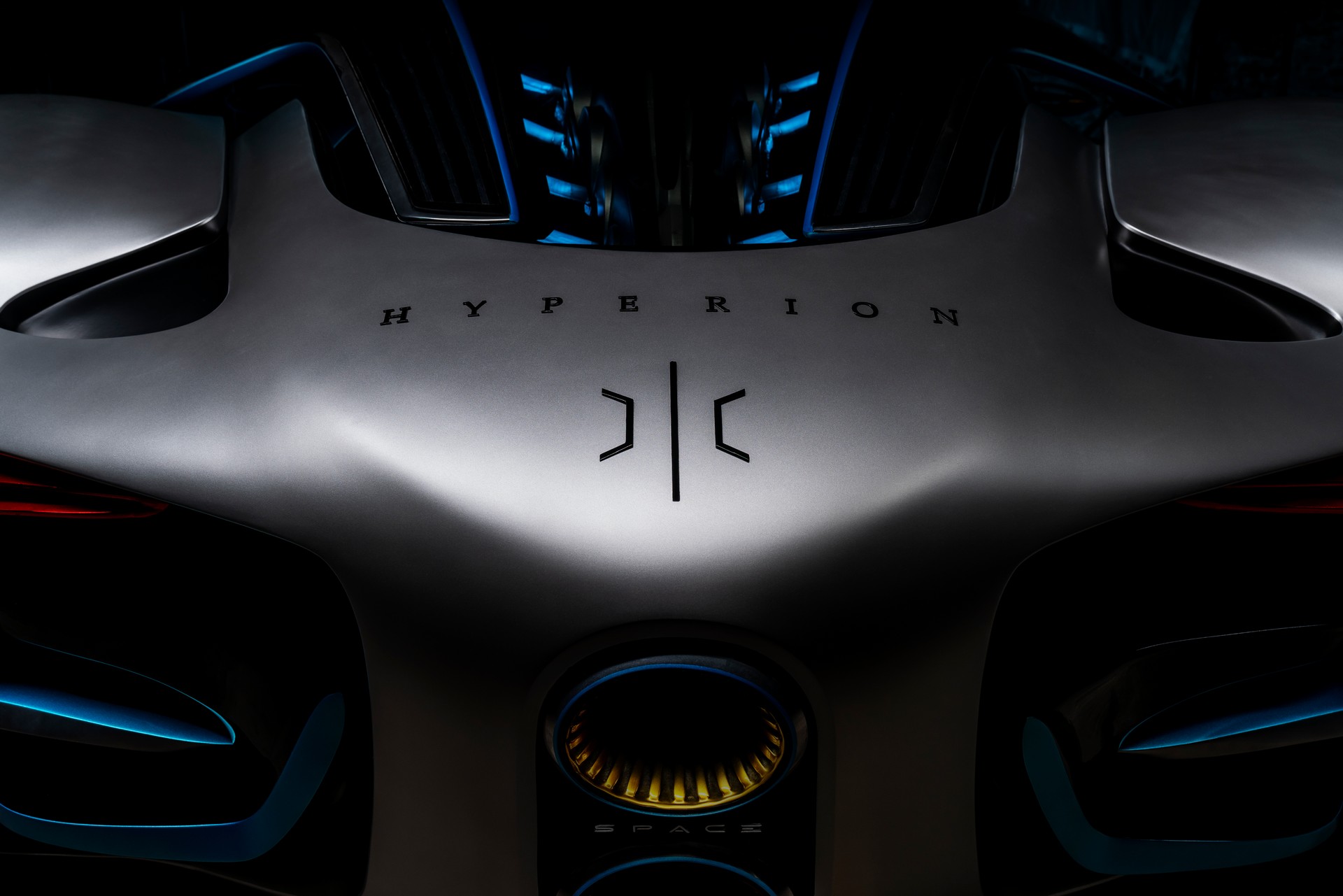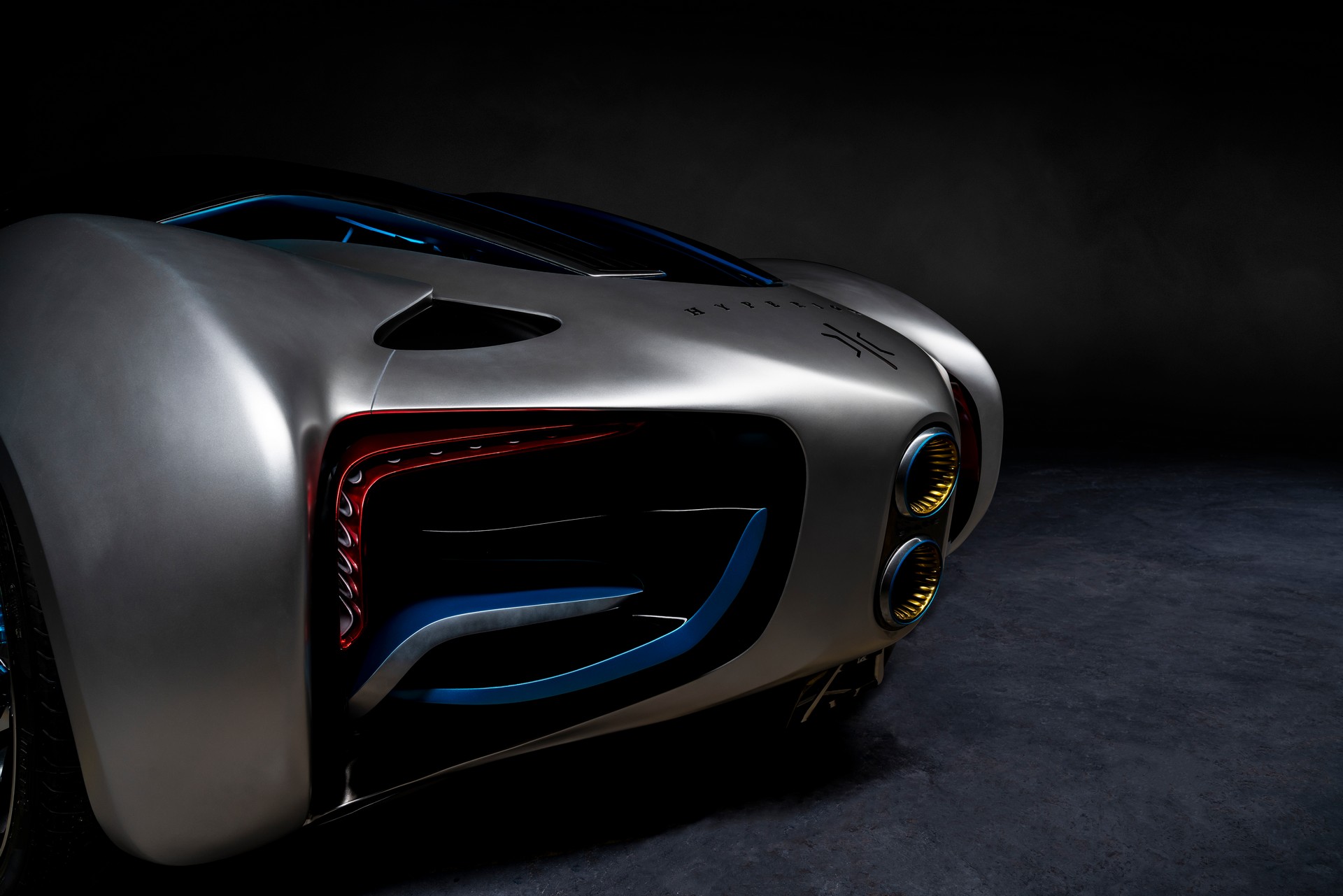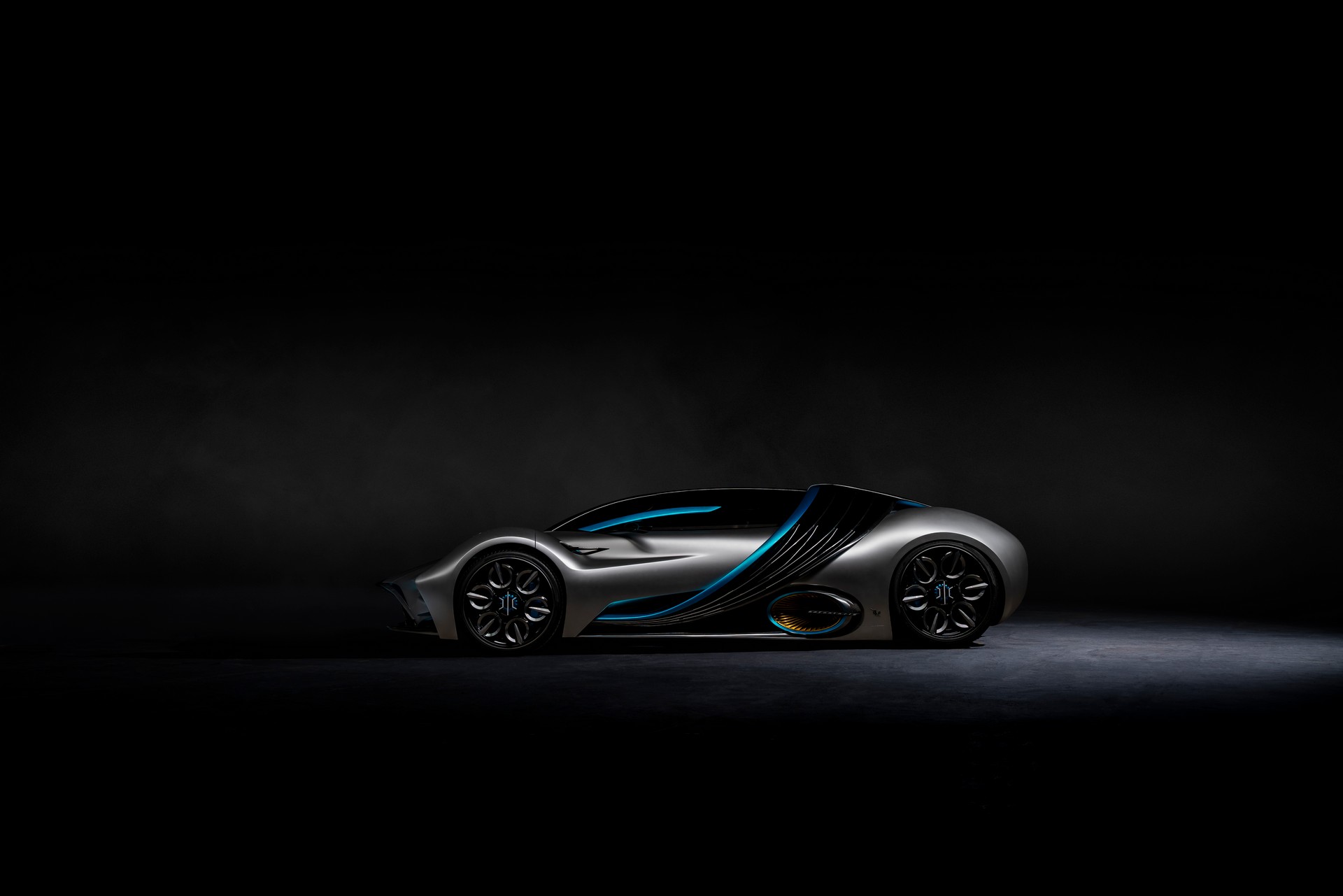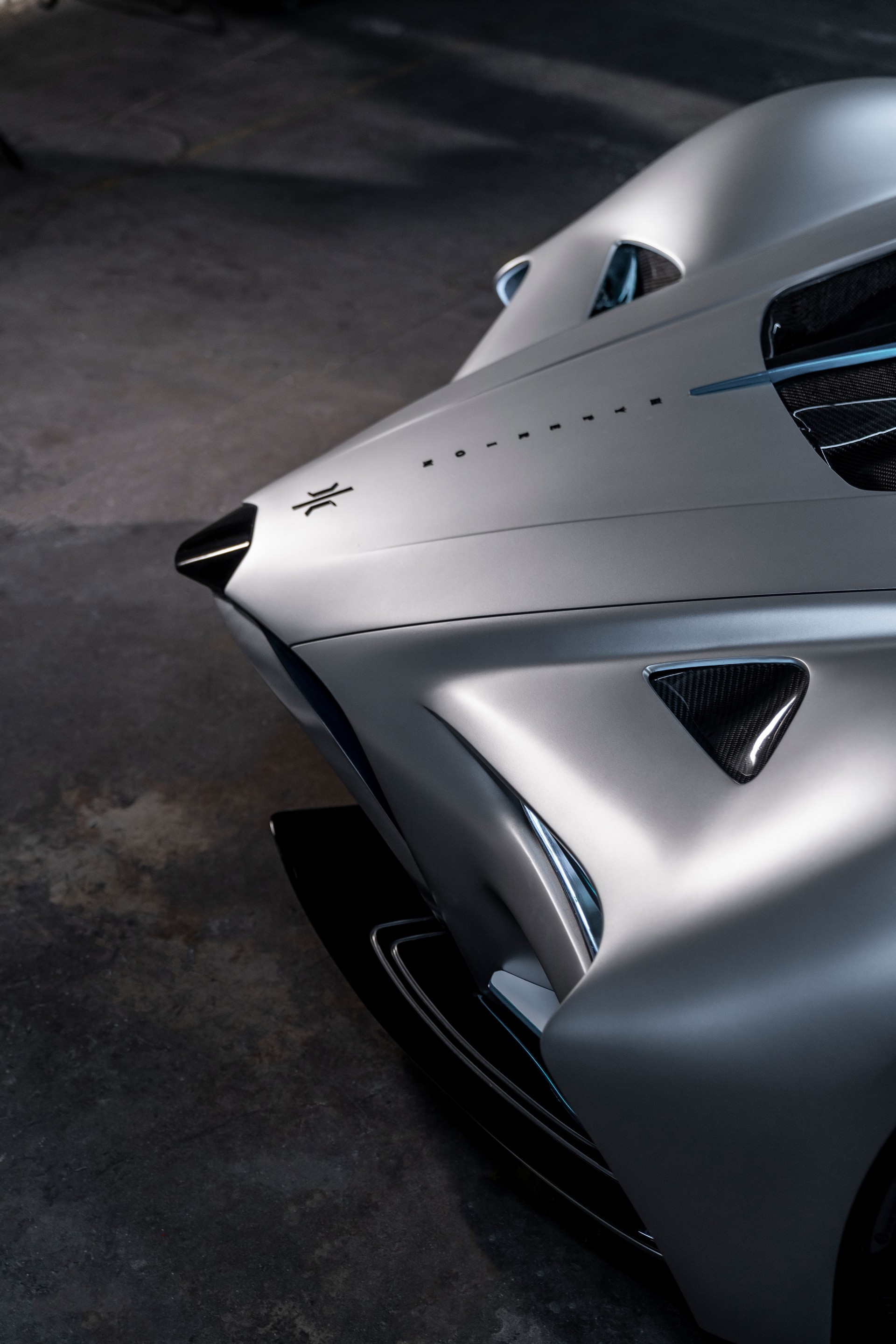Hyperion has unveiled their new XP-1 prototype, which looks a bit like a Bugatti that landed from outer space.
Described as the first chapter in the company’s long-term vision to promote hydrogen, the XP-1 is billed as the “culmination of nearly 10 years of development, testing, and research in hydrogen technology by over 200 researchers and scientists.”
Starting with the exterior, the XP-1 has a bold design which will surely make people do a double take. The company didn’t go into too many details, but the model features titanium reinforced composite bodywork and a “vortex forced” air intake.
Also Read: Hydrogen-Powered BMW X5 Confirmed For 2022 With 369 HP
The car also has “v-wing” doors and a wrap-around glass canopy which can apparently be electronically tinted for privacy. Other highlights include a Kevlar composite diffuser, LED lighting units and active aerodynamic side blades which help to improve cornering at high speeds. The side blades are covered in solar panels and Hyperion said they can “articulate to follow the trajectory of the sun.”
Last but not least, the XP-1 rides on 20- and 21-inch wheels wrapped in Pirelli P Zero tires. They’re backed up by massive carbon ceramic discs that measure 18 inches (457 mm) front and 17 inches (432 mm) rear.
While we only get a few glimpses of the interior, Hyperion said the model has a 98 inch (2,489 mm) curved display and gesture control technology. Other highlights include carbon fiber and titanium accents as well as carbon fiber seats wrapped in hand-stitched leather.
Hyperion was coy on technical specifications, but said the car has a proton exchange membrane fuel cell, carbon fiber hydrogen storage systems and ultra-capacitor energy storage technology. The model also features multiple electric motors, all-wheel drive and a three-speed transmission.
That isn’t much to go on, but the company said the XP-1 will rocket from 0-60 mph (0-96 km/h) in less than 2.2 seconds and hit a top speed in excess of 221 mph (356 km/h). The car is also slated to have a range of 1,016 miles (1,635 km) and can be refueled in less than five minutes.
The model promises to be extremely lightweight as it will tip the scales at less than 2,275 lbs (1032 kg) thanks to its carbon titanium monocoque and lightweight bodywork. The car will also have an “ultralight” aluminum alloy independent double wishbone suspension and a hydraulic ride height system.
The XP-1 was created to help showcase the benefits of hydrogen technology and Hyperion noted the model features electric motors without the added weight and extended charging times of lithium-ion batteries. Hyperion CEO Angelo Kafantaris also said the car was “partially designed to function as an educational tool for the masses” as “aerospace engineers have long understood the advantages of hydrogen as the most abundant, lightest element in the universe.”
The XP-1 is slated to go into production in 2022 and it will be built in the United States. Production will be limited to 300 units and the model will be extensively customizable.
Hyperion wasn’t ready to talk pricing, but the company told Carscoops that it will be “commensurate to other supercars of this performance level and will be announced post-launch.” The company’s spokesperson also added, “What you are seeing is the actual production car that will go on sale unchanged in 2022.”




